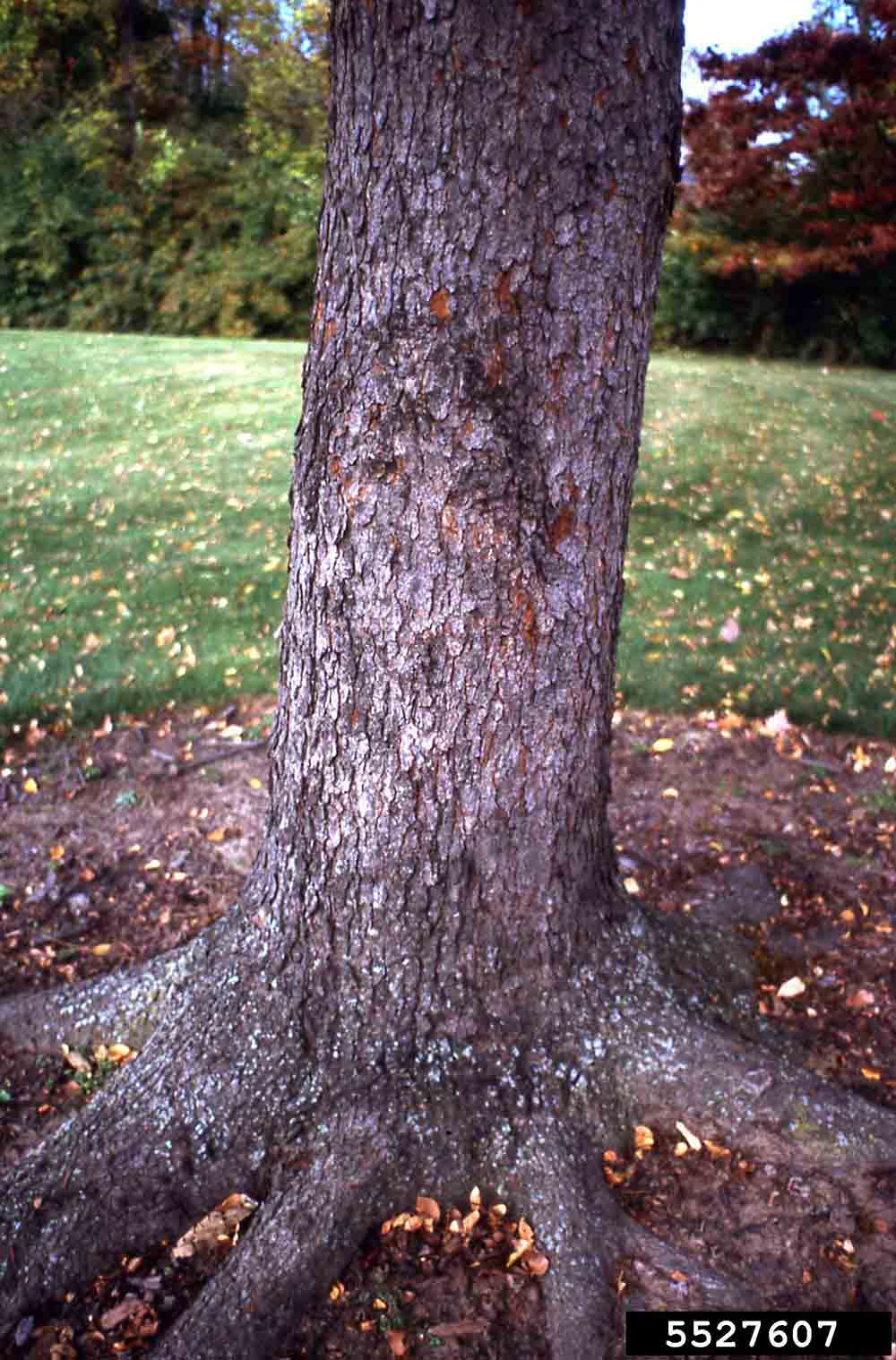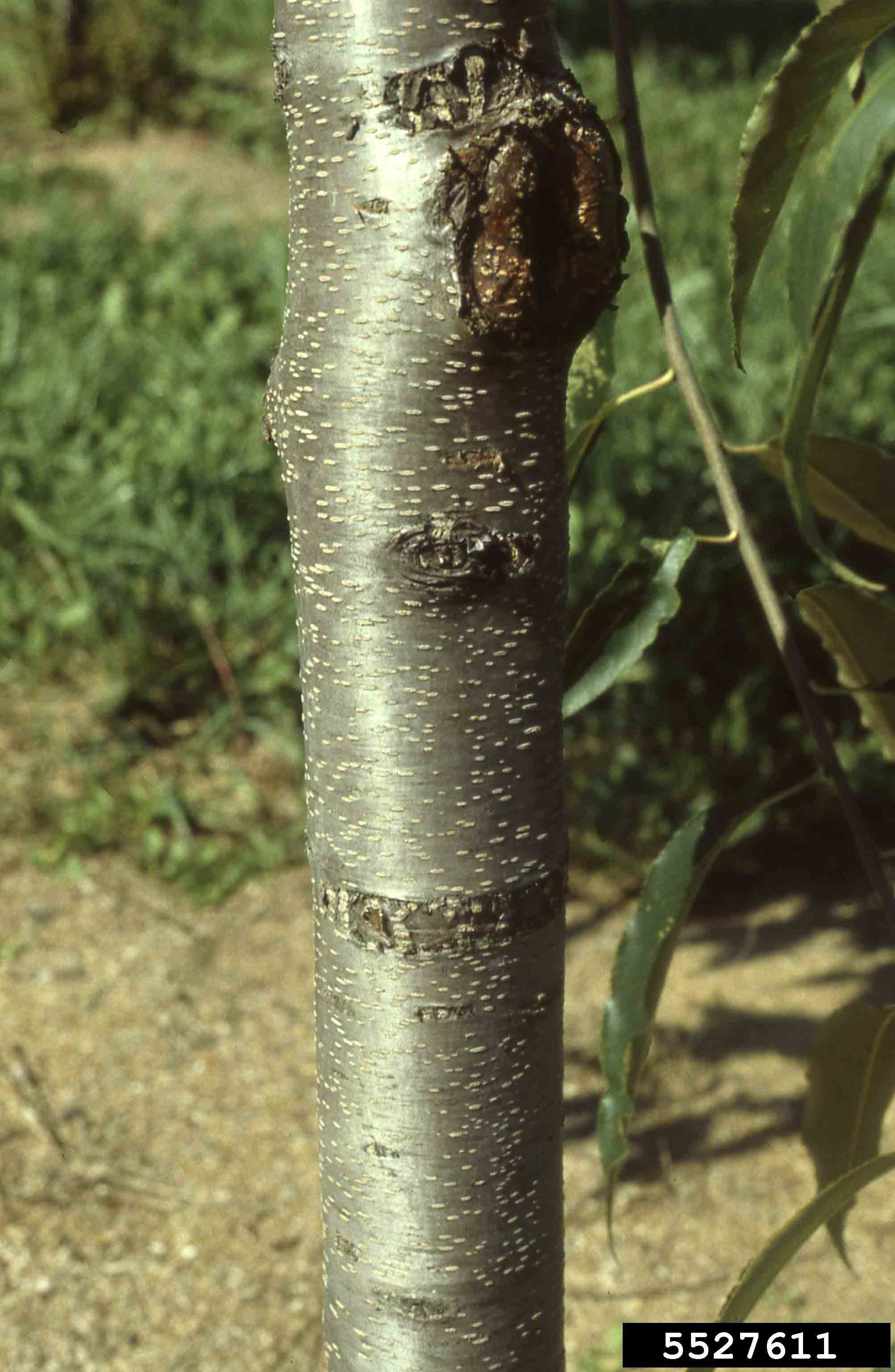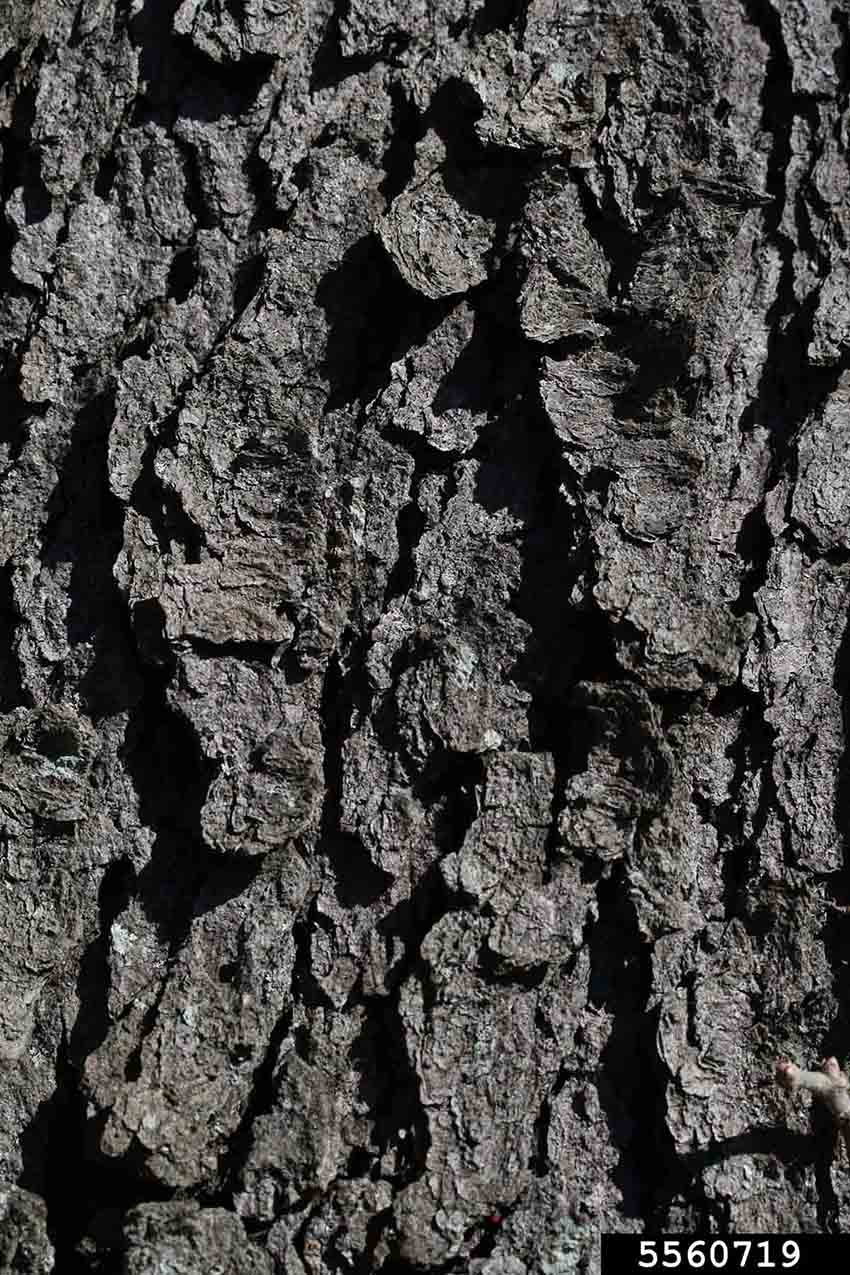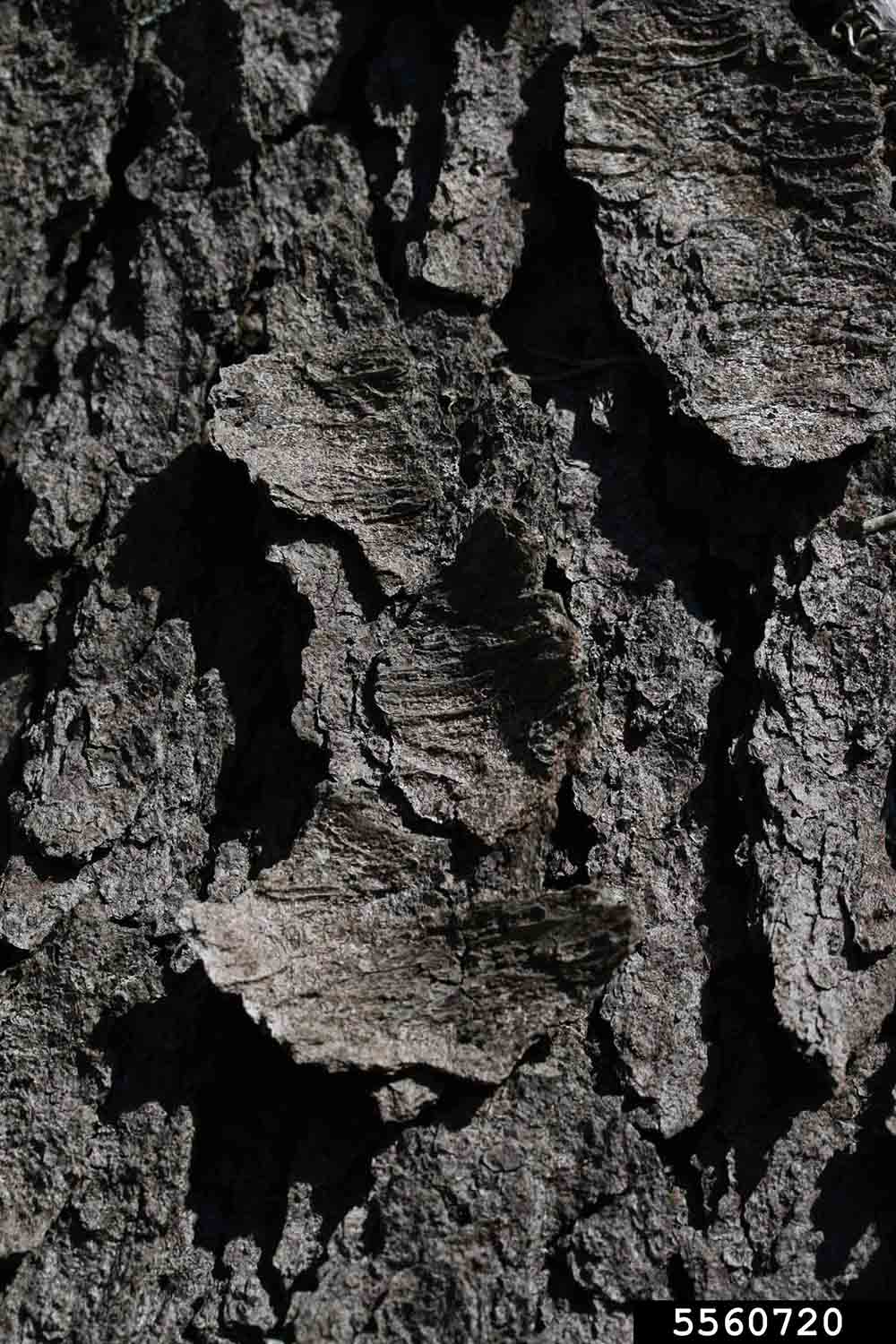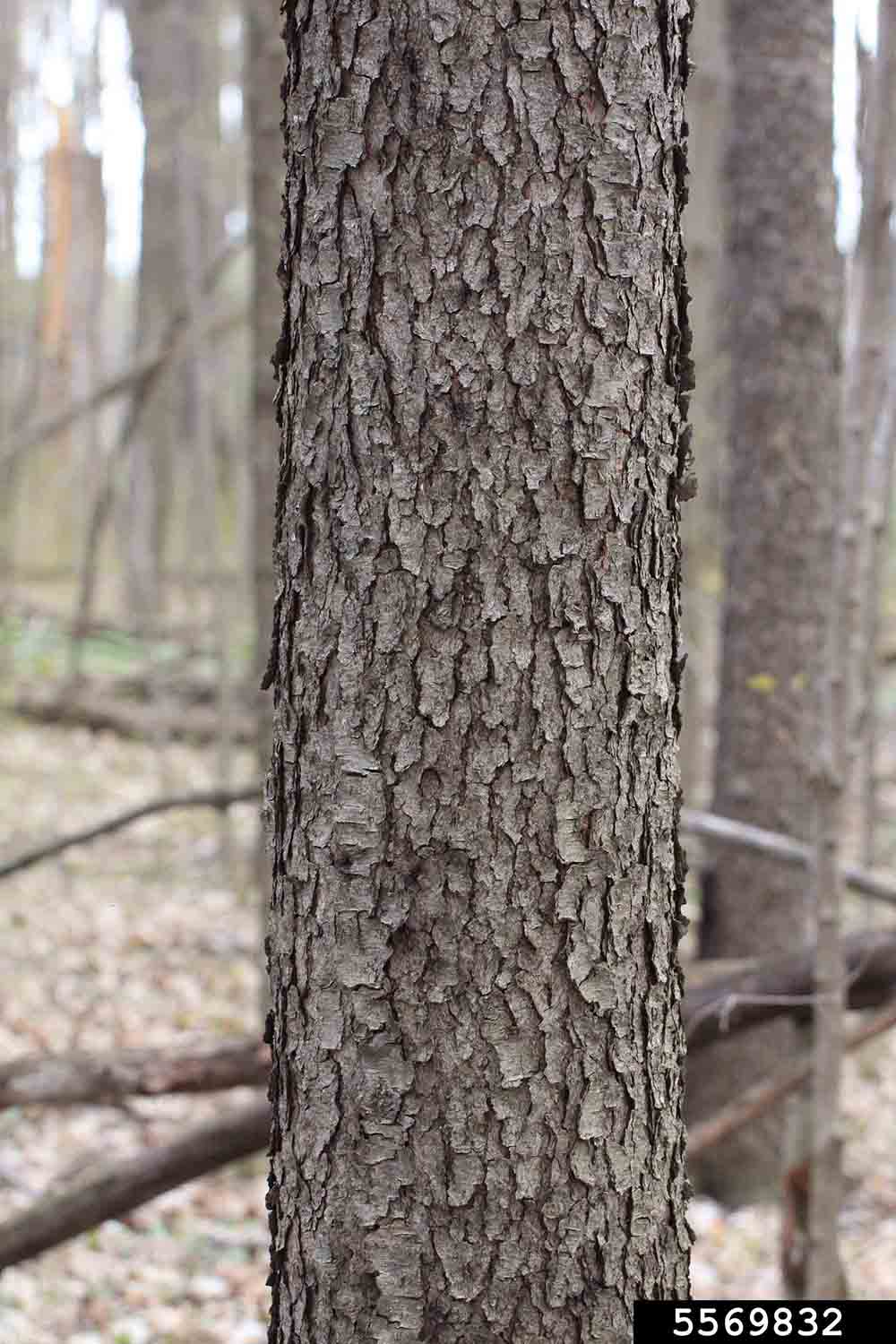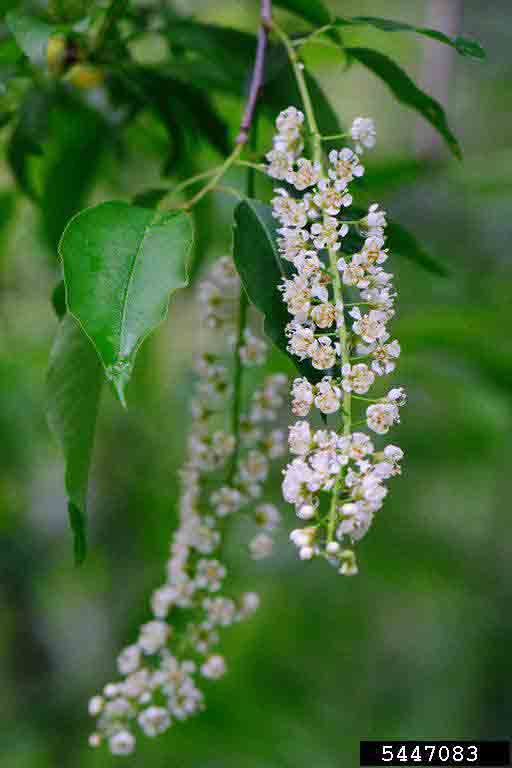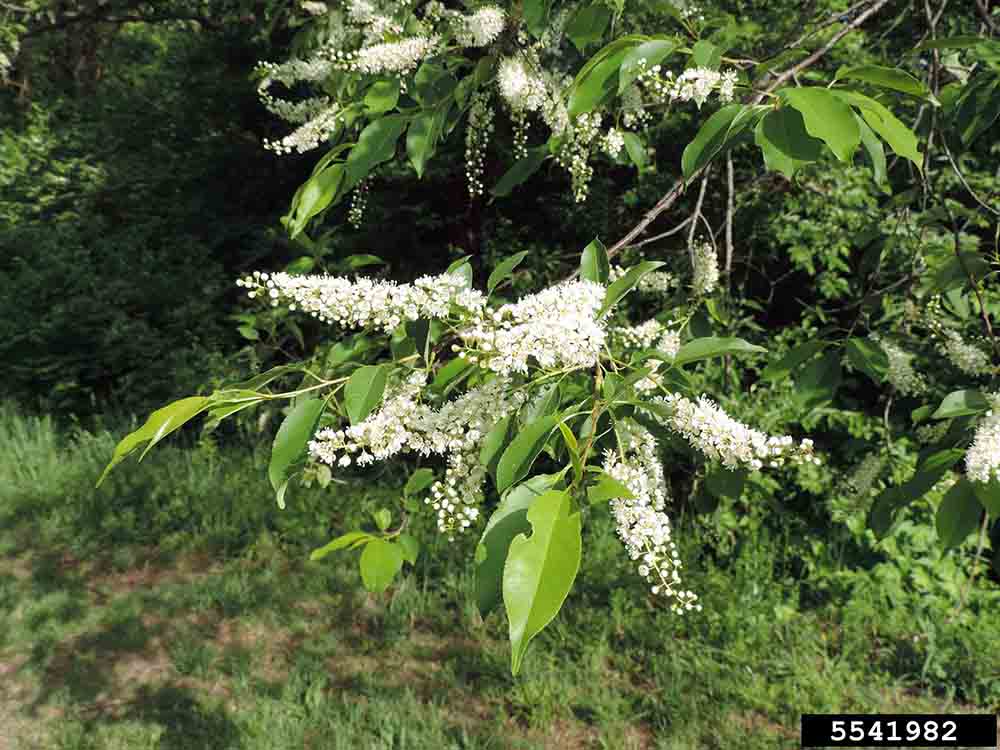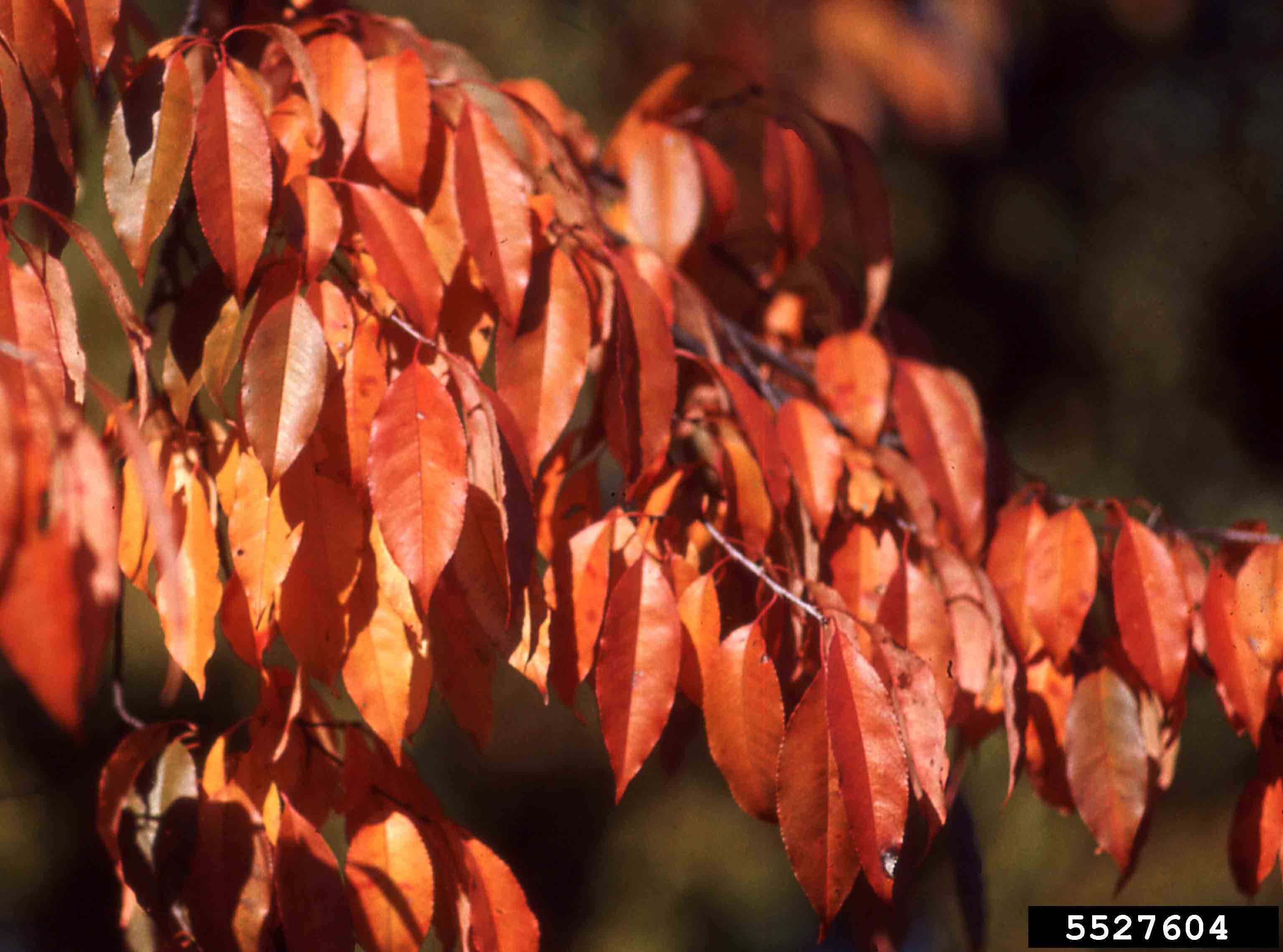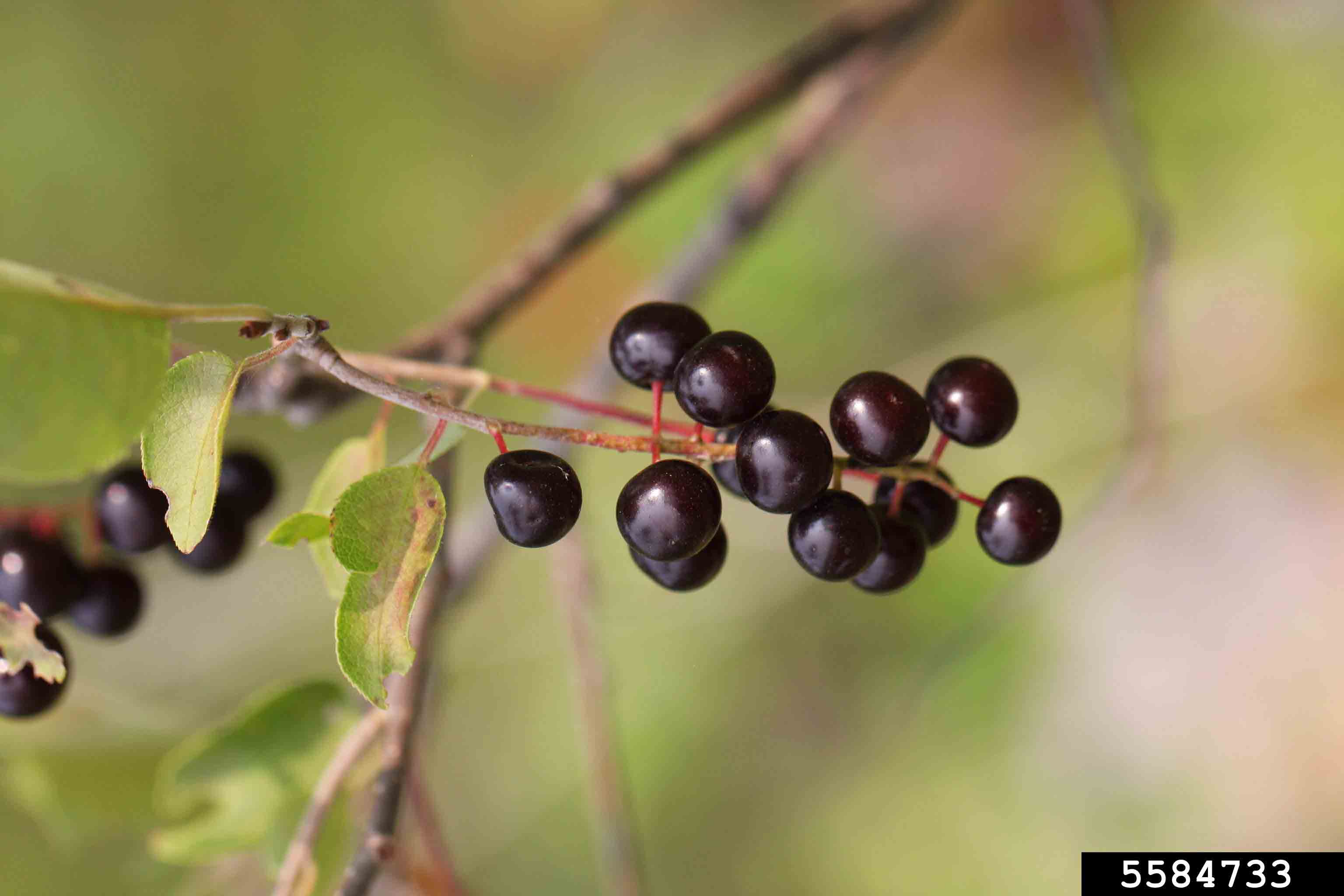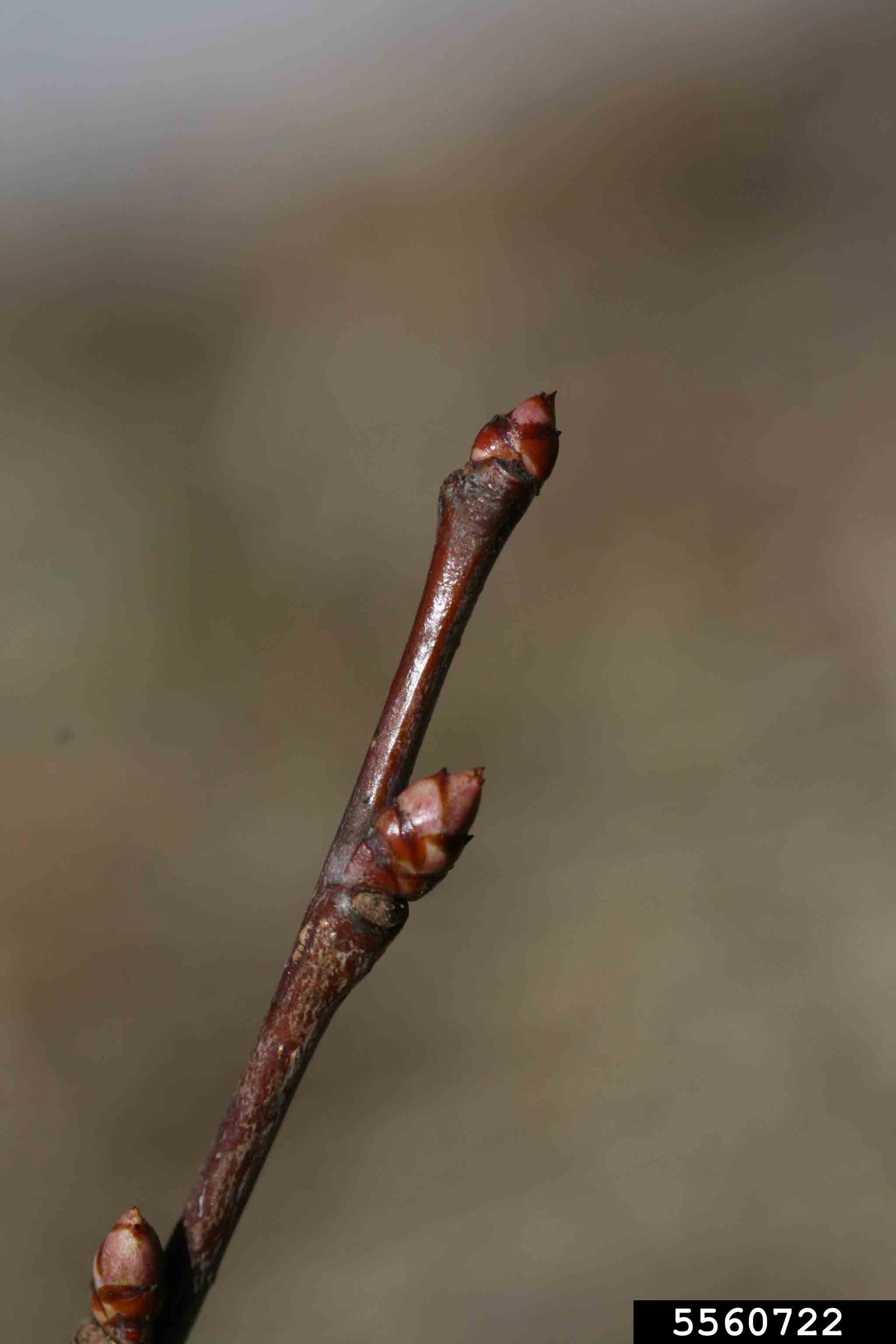Arkansas Tree Database
Black Cherry
Black Cherry
Scientific name:
Prunus Serotina
Size:
80' tall, up to 100' tall
Leaves:
alternate, simple, edges broken with many fine incurved teeth, bitter almond odor and taste; shiny green above, paler beneath
Flowers:
3" drooping clusters with 20 or more small white flowers; March-April
Fruit:
red to purplish and nearly black when ripe, 1/4" diameter, berry-like fruit (called a drupe), edible but slightly bitter, eaten by many birds and mammals; July-August
Fall Interest:
reddish orange, yellow; deciduous
Culture:
sun to partial sun; medium moisture, well-drained soil; adaptable from moist to dry
Disease/Insect:
Use:
commercially valuable wood for furniture and woodworking, second in demand only to black walnut
Cultivars:
Notes:
bark smooth with narrow white horizontal lines (lenticels) on young trees, on old trees bark rough and broken into thick irregular plates with turned back edges, showing reddish bark beneath; dangerous to livestock because of cyanide in the leaves; good source of nectar and possibly pollen for bees; host plant for butterflies and moths; native to Arkansas
Resources:
Click thumbnail to enlarge images
